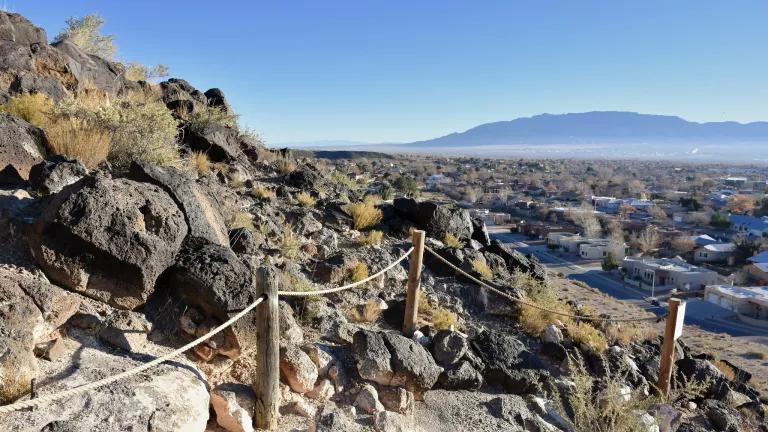Academics Converge on Low-Income Upgrade Solution

Mobilizing significant energy and health upgrades to substandard, low-income housing has long vexed policymakers and advocates alike. But two major publications released last week set a path forward for policy-makers and California’s utility and energy commissions—if they have the will to take it.
And, as described later in this post, now is the time to commit on this path. Even in the face of complex challenges from impending utility bankruptcy and wildfires, California has the opportunity to make a major investment to help avoid the twin challenges of affordability and climate-driven disasters moving forward.
What does this not-yet-taken path look like?
UC Berkeley, UCLA Propose a Single, Statewide One-Stop-Shop
The first publication was a two-page policy brief examining how to spur large-scale energy efficiency housing upgrades for low-income residents to address climate change, improve living affordability, and increase health and well-being. Produced by UC Berkeley and UCLA Schools of Law, in coordination with the California Energy Commission and with support from Bank of America, the document summarizes California-tailored solutions resulting from two stakeholder convenings held in 2018.
Shaping the Path with 5 High-Level Solutions
The policy brief puts forward five high-level recommendations, which will be expanded on in a full-length report later this year:
- The Legislature or PUC should create a single, statewide “one-stop shop” efficiency program administrator for rental apartment upgrades. This will facilitate better access to programs with full technical assistance and increase offerings throughout the state, including in areas without any energy efficiency services for this sector. It will also offer standardized support to developers who often have portfolios of numerous buildings across the state and in different utility service territories.
- The Legislature should create a long-term fund to support the one-stop shop administrator and subsidize advanced efficiency measures.
- Utilities and state energy regulators should enable greater access to on-bill financing and on-bill repayment arrangements for efficiency upgrades.
- The CEC and CPUC should update energy metrics (e.g. in the form of cost-effectiveness evaluations and program goals) to reflect fuel- and carbon-neutrality, facilitate health and safety improvements, and increase savings
- State regulators should create a comprehensive database to prioritize efficiency retrofit projects
A Well-Trodden Path? ACEEE Spotlights Existing Exemplary Programs
Two days after the University of California schools released their policy brief, ACEEE released a report announcing eight exemplary one-stop shop energy efficiency programs for multifamily housing from across the country. They share similar attributes. Here are two examples:
Massachusetts’ LEAN Multifamily Program
This program pools funding from utility and non-utility sources to a single administrator that offers the full range of energy efficiency services, from appliances to HVAC systems. With an annual budget of $110 million, a customer base of 20,000 low-income households annually, and a true single point of contact that takes care of auditing, installation, and quality control, this program proves how it can be done and what it looks like at scale.
BayREN’s Multifamily Building Enhancements Program (BAMBE)
The BayREN BAMBE program’s focus on comprehensive whole building upgrades with a one-stop-shop delivery model was recognized as an exemplary program. Located in the Bay Area of California, it has serviced over 31,000 units since its inception in 2013 with improvements to building envelope; heating, cooling, and domestic hot-water equipment; distribution and controls; lighting fixtures and controls; and appliances.
And while California’s Low-Income Weatherization Program for Multifamily (LIWP-MF), which is nearly a carbon-copy of BAMBE, was not featured because ACEEE can only award utility funded programs, the program has many similar and other exemplary attributes. Among them, LIWP achieves an average of 44 percent energy savings with solar energy included and has high demand, with a waitlist of over 300 affordable housing developers.
In contrast, California’s existing large low-income program, the Energy Savings Assistance Program, is two years behind in launching its affordable housing multifamily program, has an average of 3 percent savings per household, and sees millions of dollars go unspent annually.
So, can California cut and paste the exemplary models . . . and expand?
Why Does This Matter Given Wildfires and Impending Utility Bankruptcy?
We know what’s needed and what has succeeded. Now we need to spur action from all corners of California—and especially at the Legislature and with the Energy and Utilities Commissions—to make the necessary changes.
While addressing the outfall from wildfires and utility bankruptcy demand to be top priority for energy-focused policymakers, the University of California schools’ set of policy recommendations deserves real attention. It’s the type of policy down-payment, that if made meaningful, can help offset future calamities—whether they be affordability-driven or climate-driven. As the IPCC’s latest report and NRDC’s climate modeling shows, we need to upgrade all our buildings to use 30-40 percent less energy within the next ten years to have a chance of staving off the worse impacts of climate.
Plus, the cost of inaction is high.
It comes in the form of running up lower-income Californians’ utility bills and energy insecurity; costlier utility investments to supply energy instead of save it (funded by all California customers); increased medical bills from indoor health hazards; and ripple effects to California’s housing affordability crisis (consider that utility disconnections from non-payment can lead directly to eviction, especially for renters in affordable housing).
What Does Action Look Like?
In California, we could start by:
- Introducing legislation to create a statewide “one-stop shop” efficiency program administrator for low-income multifamily dwellings;
- The Legislature can ensure significant and long-term funding for the Low-income Weatherization Program commensurate with the need – and way beyond the $10 million currently proposed in Governor Newsom’s budget; and
- The Public Utilities Commission can revamp the Energy Savings Assistance program in the next program cycle to ensure it provides meaningful benefits for renters.
Let’s move forward. The wellbeing of California low-income renters and our climate hangs in the balance.



